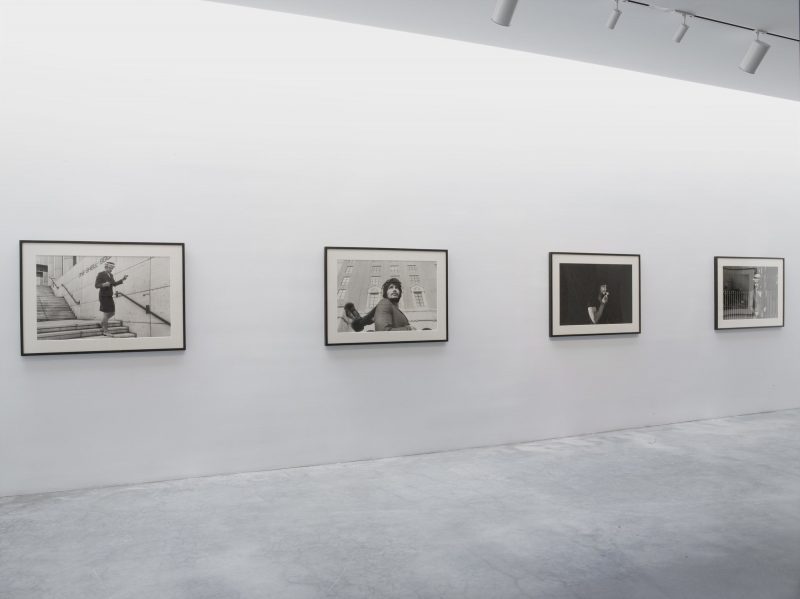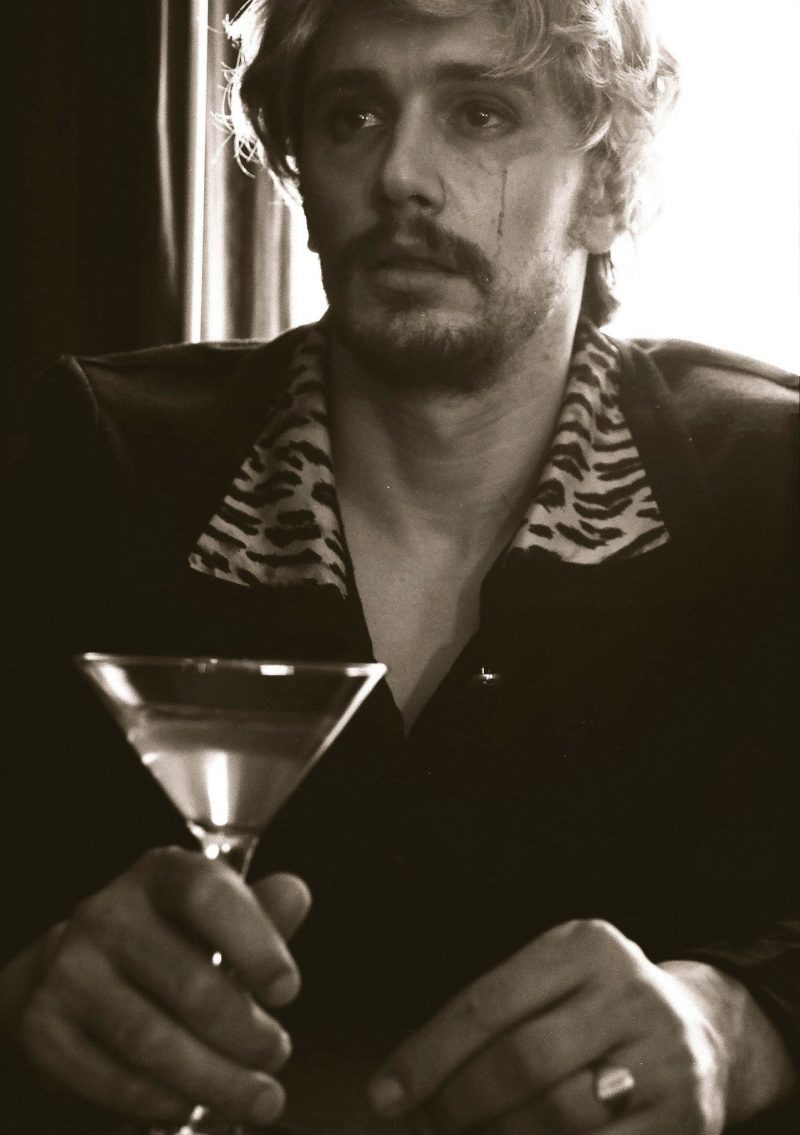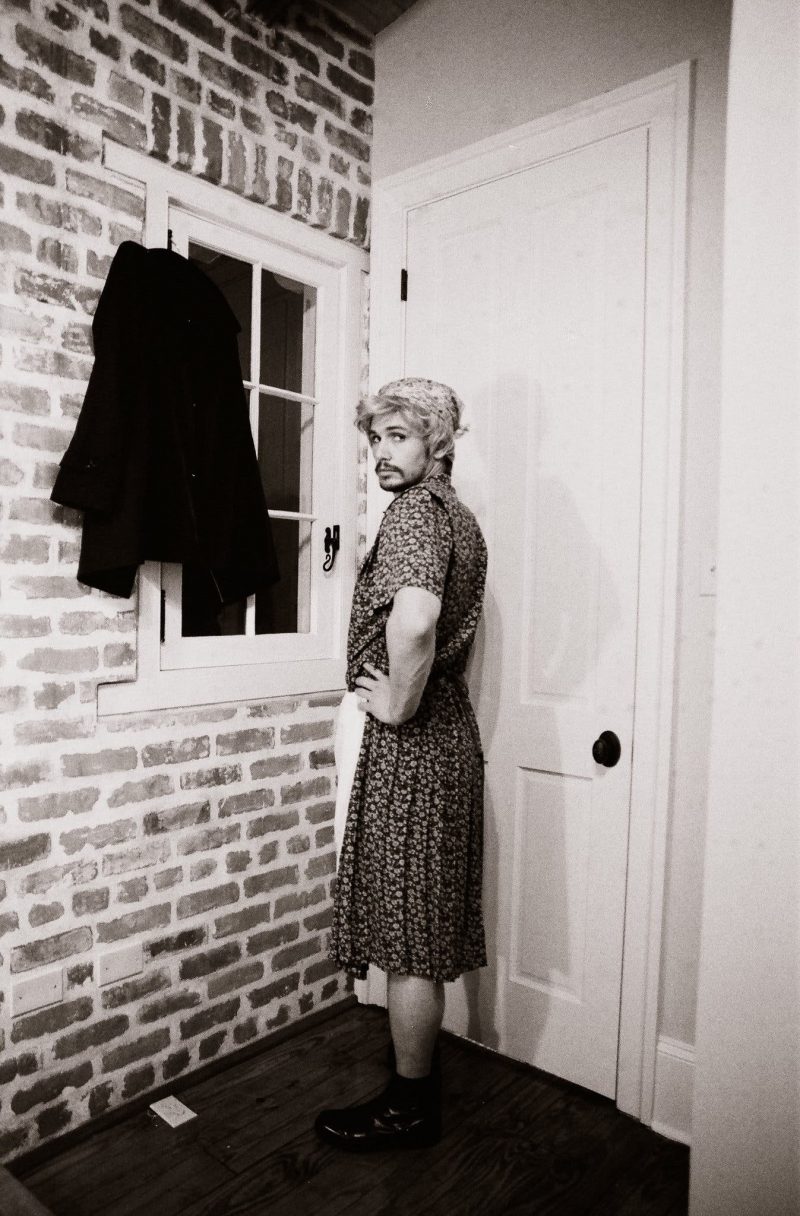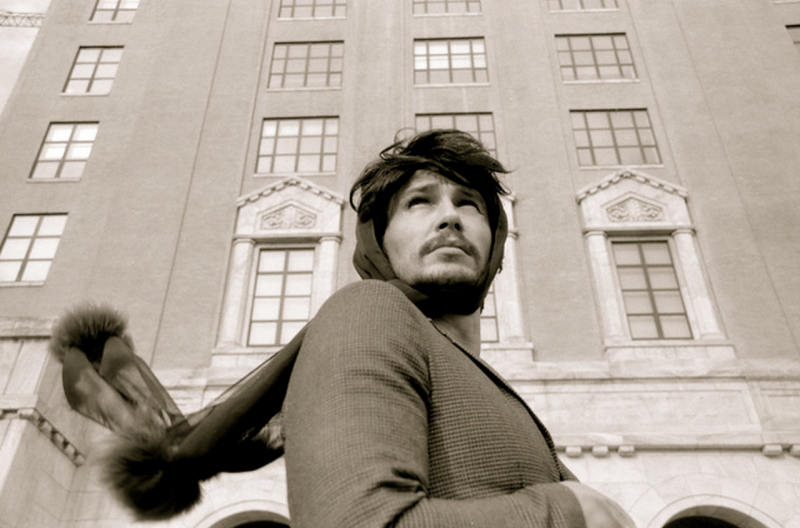SOLD. James Franco: ‘New Film Stills’ Book 2014
James Franco: New Film Stills
Paperback – January 1, 2014
Excellent condition. Measures 11 x 9.5 inches.
Title: James Franco: New Film Stills
Publisher: Published by PACE Gallery for the exhibition of photographs
Publication Date: 2014
Binding: Soft cover
Book Condition: New
This text presents a selection of over 50 works of experimental films, photographs, installations, and drawings by James Franco. His work explores the themes of childhood and nostalgia, games and destruction, and the American landscape, presented through reproduction, film stills, and installation photos.
SOLD
Quote:
With “New Film Stills,” Pace has backed itself into a corner with no credible way out. The gallery can either say We’re publicity whores and want long lines to see bad gewgaws by a celebrity. Or it can say We love this art. Neither is a defensible position.
James Franco
James Franco is an actor, director, screenwriter, and artist. His film appearances include “Milk,” “Pineapple Express,” the “Spider-Man” trilogy, and upcoming appearances in “Eat, Pray, Love,” and “Howl,” in which he portrays beat poet Allen Ginsberg. On television, he starred in the critically acclaimed series “Freaks and Geeks.” Franco has also written, directed and starred in several short plays, two of which — “Fool’s Gold” and “The Ape” — he adapted into feature-length films. He also wrote and directed the film “Good Time Max.” Franco will be participating in an upcoming gallery show at Deitch Projects in New York, and his writing has appeared in the Wall Street Journal, McSweeney’s, and other publications
Why James Franco’s Cindy Sherman Homage at Pace Is Not Just Bad But Offensive
By inserting himself into the “Untitled Film Stills,” Franco renders them toothless.
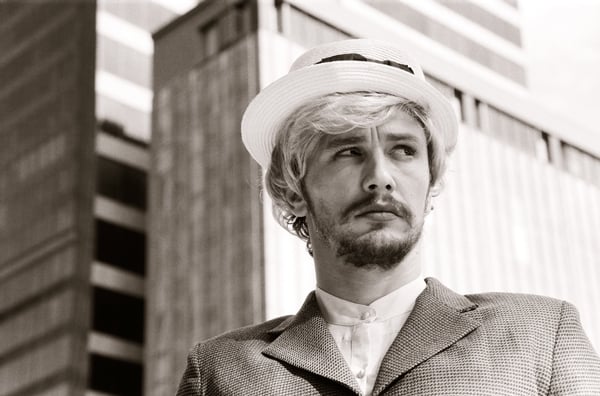
James Franco’s new exhibition at Pace is bad. It’s not a George W. Bush–caliber train wreck, but it’s close. The exhibition, “New Film Stills,” features 29 photographs from Franco’s series inspired by Cindy Sherman’s seminal “Untitled Film Stills” (1977–80). In each black-and-white photograph the artist-actor-scholar appears dressed (or undressed) in women’s clothes, often sporting a wig and makeup, for an effect that falls somewhere between drag and art historical dress-up. Though passable as individual photos, when taken as a conceptual experiment in appropriation, homage, and remixing, “New Film Stills” is at best comically sophomoric. At worst it’s disrespectful—to Sherman, to viewers—and sexist.
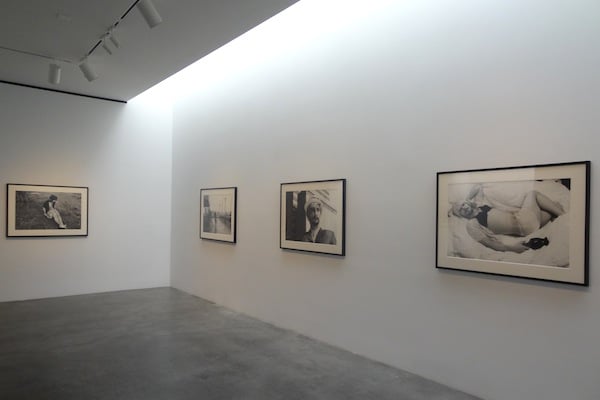
Installation view of James Franco’s “New Film Stills” at Pace Gallery.
Photo: Benjamin Sutton.
However fraught the entire project may turn out to be, Franco’s photos offer an immediate, middlebrow sort of satisfaction. It’s fun, for a few minutes, to try and match up his images with the Sherman originals. Some of the photos are direct visual quotations, like New Film Still #21 (2013), which replicates almost exactly the low angle, 1950s costume, short-cropped blonde hair, and skyscraper backdrop of Sherman’s Untitled Film Still #21 (1978). Others are looser approximations of their Sherman antecedents, like New Film Still #59(2013), which substitutes a rain-slicked pier for the dry, highway-adjacent walkway of Untitled Film Still #59 (1980). Technically and formally Franco is perfectly capable, convincingly replicating the framing, lighting, and composition of Sherman’s photos. But the show flops when you begin to consider the work as he intended—as a series inspired by and commenting upon Sherman’s “Untitled Film Stills.”
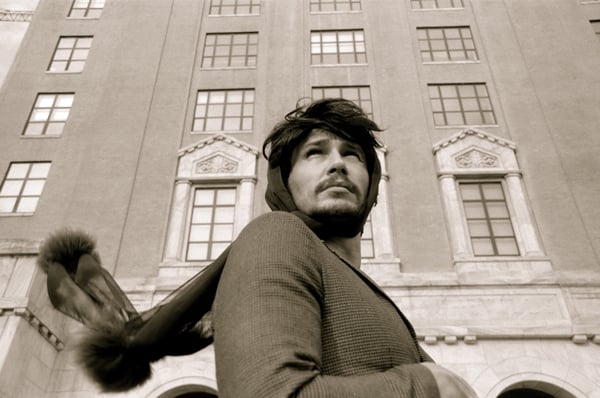
James Franco, New Film Still #58 (2013).
© 2014 Pace Gallery, All Rights Reserved. © the artist, Pace Gallery.
Simply put: Franco’s photos fail (or worse) because he is a male “artist” reinterpreting a piece of feminist art with no apparent understanding of that aspect of the work. Sherman has often downplayed the feminist themes running through her work, understandably not wanting to be pigeon-holed as a feminist artist. But there can be no doubt that in the “Untitled Film Stills” series she questioned, undermined, and inverted the presumed-male perspective—or, to cite the oft-cited Laura Mulvey, the “male gaze”—of film noir, mainstream cinema, and, more generally, the majority of filmic and photographic imagery throughout history. By simply inserting himself into his recreations of Sherman’s images without engaging with their charged play of gendered dynamics, Franco seems to be presuming a kind of post-gender utopia.
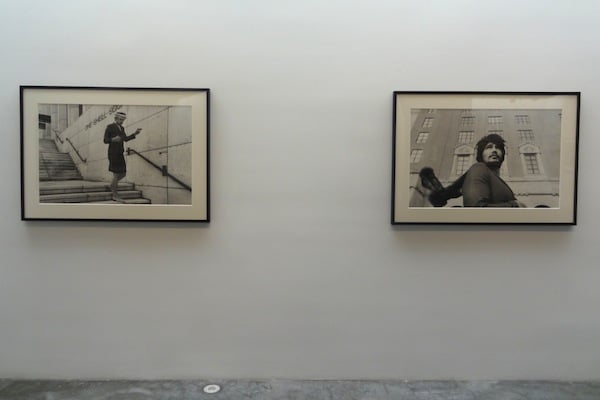
Installation view of James Franco’s “New Film Stills” at Pace Gallery.
Photo: Benjamin Sutton.
“The ‘male gaze’ in Franco’s book isn’t specifically male; it is the gaze of whoever has power,” poet Frank Bidart writes in the Pace catalogue introduction. “One’s fate seems as much a metaphysical condition as a social one.” The world of Franco’s photographs, in other words, is one in which power and gender are no longer linked. That’s a nice fantasy and all, but articulating this vision of post-gender empowerment in works that effectively neuter a seminal piece of feminist art smacks of hypocrisy.
Perhaps the actor’s poetry in the catalogue is intended to represent Franco’s feminine side.
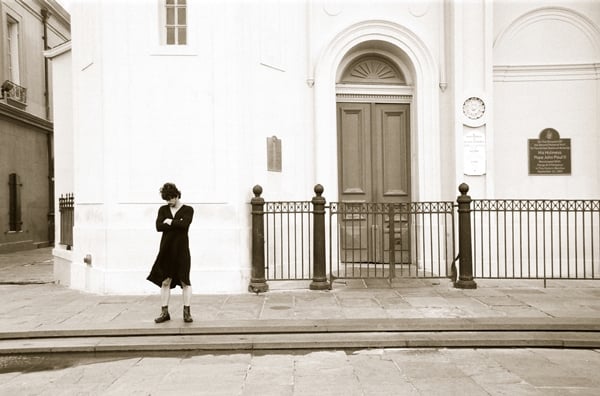
James Franco, New Film Still #42 (2013).
© 2014 Pace Gallery, All Rights Reserved. © the artist, all images © Pace Gallery.
Ever the man of letters, he has penned a poem for all 65 works in Sherman’s series; they are included in the exhibition catalogue, and offer Franco’s imagined explanation of what’s going on in each image. The poems alternate between stiff inner monologues and outrageous musings riddled, appropriately, with film references. In “Untitled Film Still #48” Franco writes: “This is the big one, the famous one/The one that makes me think/Of Hitchcock, although which/I’m not sure, Maybe Psycho.” The poem for “Untitled Film Still #27” projects a telling inner monologue onto a teary martini-sipper: “See, I’m the star of a one woman,/Multi-man variety show:/A clown show with drama,/Laughs, and a lot of action.”
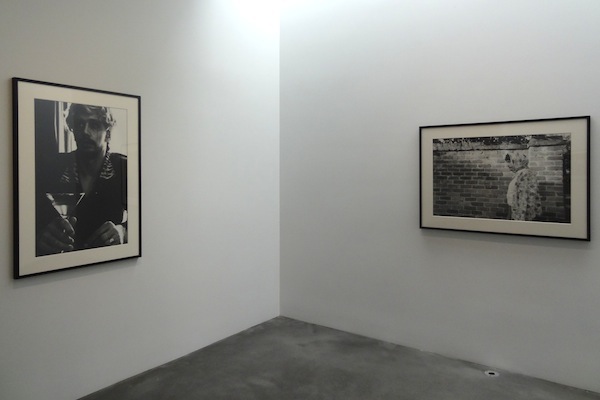
Installation view of James Franco’s “New Film Stills” at Pace Gallery.
Photo: Benjamin Sutton.
Every so often, Franco is actually funny, as in this passage from “Untitled Film Still #16”: “She’s a big momma with a fringe,/Unapologetic, smoking her cigarette/Like The Real Housewives of Sicily,/Or maybe it’s that show Mob Wives./That’s real shit, right?” For the most part, though, the poems flaunt their superfluity, as this section of “Untitled Film Still #45” illustrates: “My pool is my safest place,/I swim everyday, a hundred laps:/Freestyle, breast and side./It’s how I keep my figure.” In spite of their flimsiness, Franco’s poems do great disservice to Sherman’s work. They relentlessly impose fixed narratives—written by a man—on photos of women whose generic, non-specific, and generally familiar imagery were specifically created to conjure many different and competing scenarios in the viewer’s mind. The poems straightjacket each of Sherman’s purposefully polysemic images into prescribed interpretations.
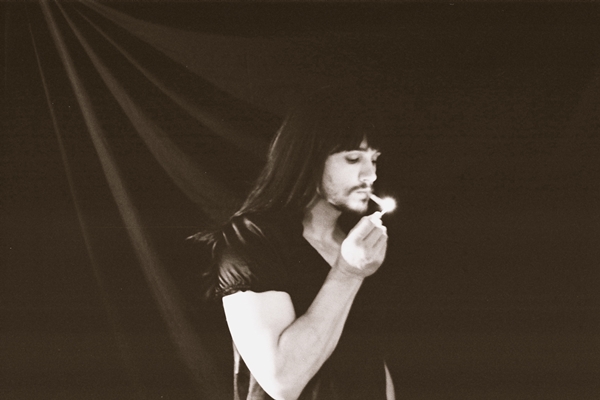
James Franco, New Film Still #32 (2013).
© 2014 Pace Gallery, All Rights Reserved. © the artist, all images © Pace Gallery.
Could Franco’s gross mishandling of Sherman’s oeuvre in “New Film Stills”—whose status as art Sherman herself has called into question—be pardoned on the grounds that it will introduce the “Untitled Film Stills” to a wider audience? When I visited the gallery last week, I overheard a Pace staffer remarking that younger visitors who had never heard of Cindy Sherman might be turned on to her work thanks to Franco’s crossover celebrity appeal. While I think this argument can work in some situations—although all that comes to mind immediately are similar farces like Lady Gaga’s Marina Abramović promo and Tilda Swinton’s public napping at MoMA—Franco’s series so completely distorts and misrepresents Sherman’s work that I think it is untenable. Understanding Sherman’s series requires a passing familiarity with one or more of at least the following topics: The history of photography; classical Hollywood cinema of the 30s, 40s, and 50s; feminist theory in general; and feminist film theory in particular. Understanding James Franco’s series only requires knowledge of who James Franco is.
James Franco’s “New Film Stills” is on view at Pace Gallery’s 508 West 25th Street location through May 3.
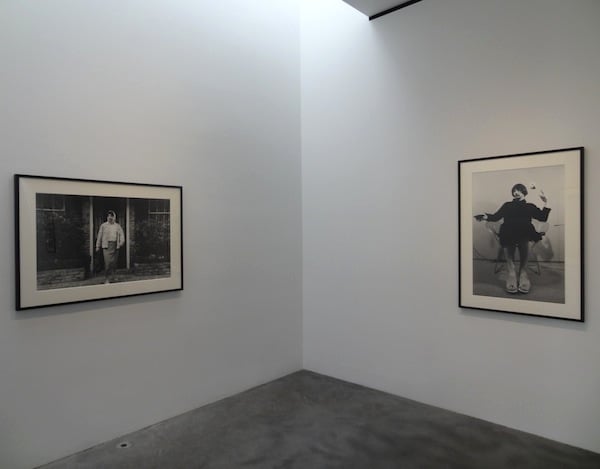
Installation view of James Franco’s “New Film Stills” at Pace Gallery.
Photo: Benjamin Sutton.
Press:https://www.vulture.com/2014/04/jerry-saltz-on-james-francos-new-film-stills.html
Cindy Sherman on James Franco’s New Show: ‘I Don’t Know That I Can Say It’s Art’

